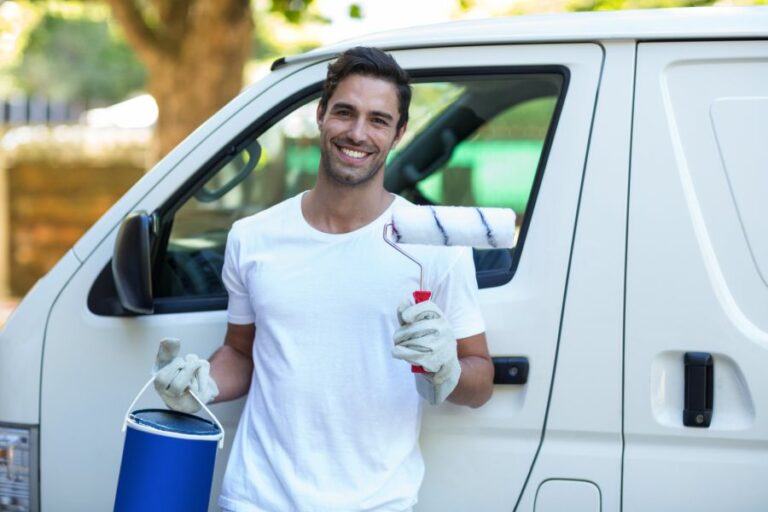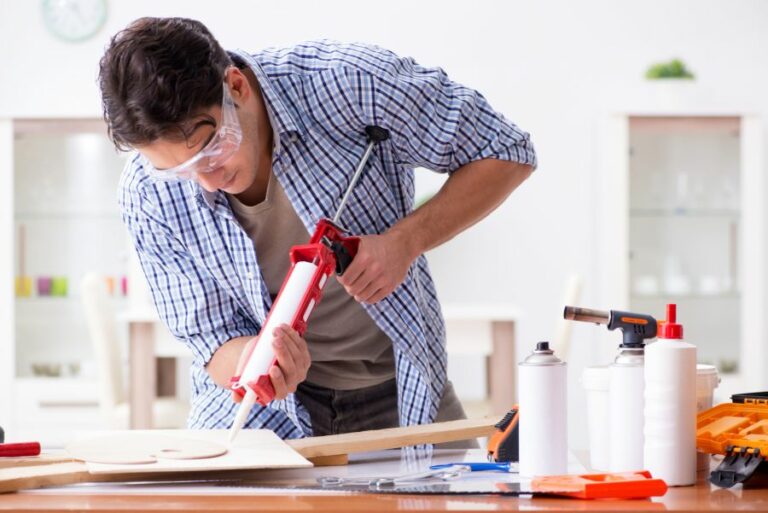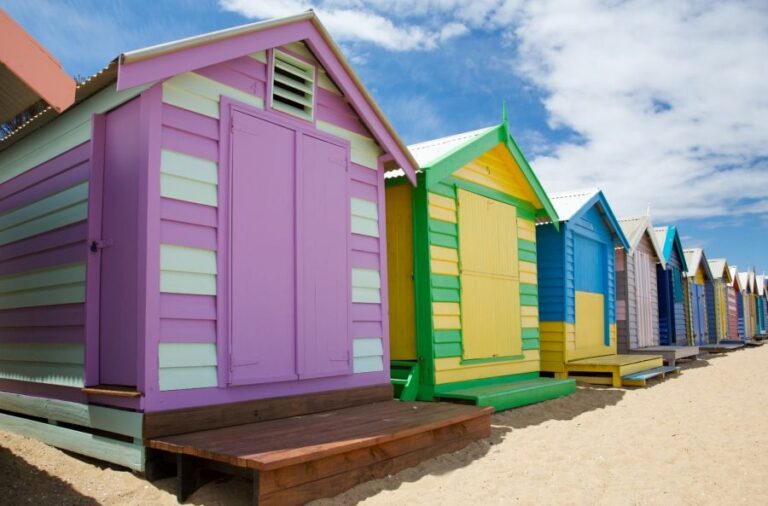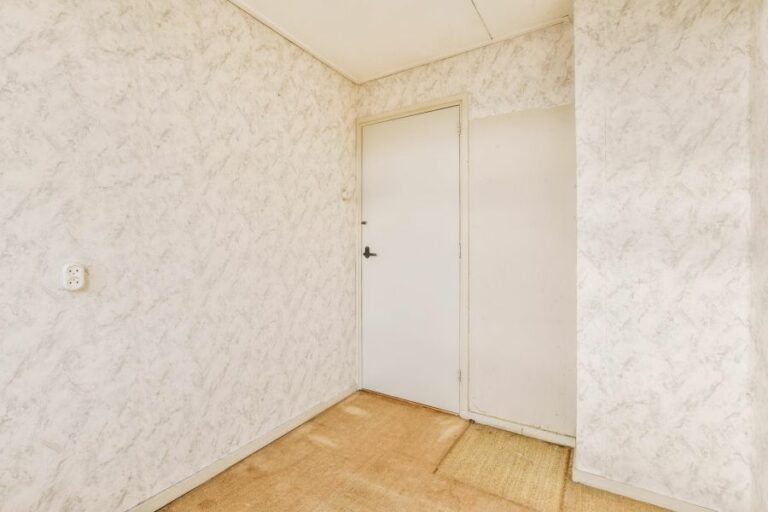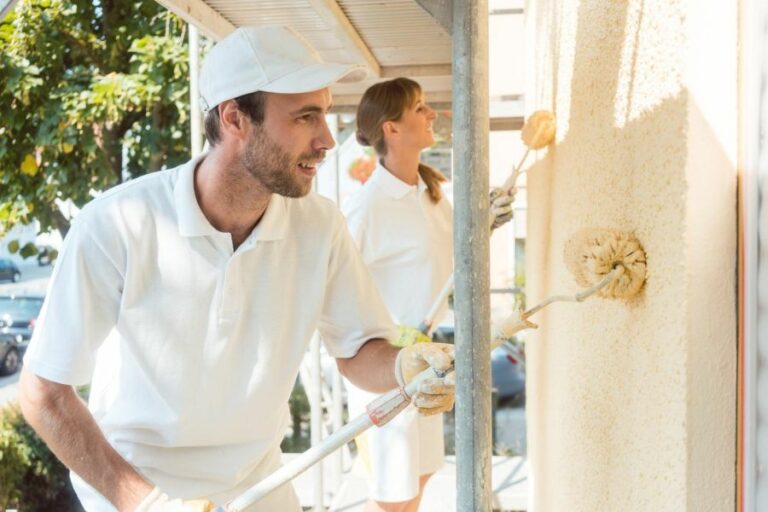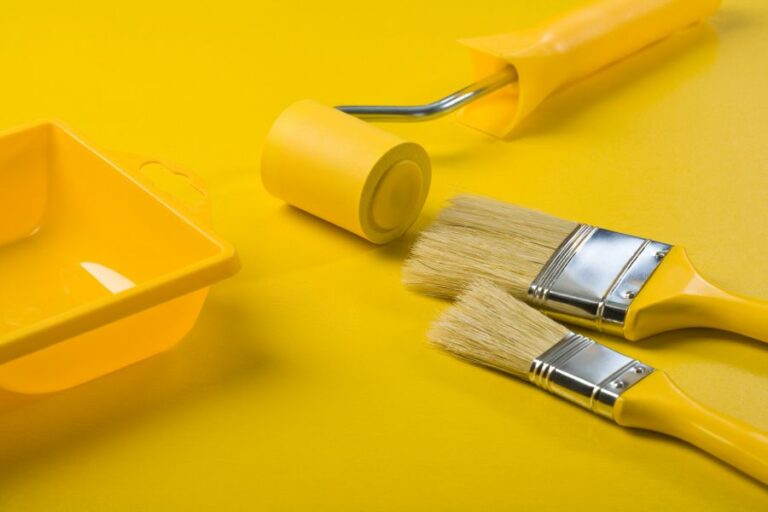High-Pressure Surface Cleaning Outdoors. What Pros Say
Are you tired of looking at unsightly, stained surfaces around your property? We know how important maintaining a clean and welcoming outdoor environment is, both for your personal satisfaction and property value. Luckily, we have a highly effective solution tailored just for you: high-pressure surface cleaning outdoors.
High-pressure surface cleaning outdoors:
High-pressure surface cleaning is an eco-friendly method for removing dirt and contaminants from outdoor surfaces like concrete, brick, wood, and metal. It involves using a pressure washer, appropriate personal protective equipment, and proper cleaning techniques to ensure safety and efficiency. Suitable for various tasks, this method can restore the appearance of outdoor areas and improve their longevity.

Ever wondered how to achieve an immaculate outdoor space with minimal effort? Discover the secret to high-pressure surface cleaning outdoors and experience flawless results. Read on to unleash the full potential of this innovative cleaning method and transform your home exterior effortlessly!
Contents
- 1 Outdoor High-Pressure Surface Cleaning
- 2 Is a Pressure Washer Safe for House Exterior Cleaning?
- 3 Optimal PSI for Cleaning a House Exterior
- 4 Ideal PSI for Pressure Washing Patios
- 5 Pressure Washing Techniques for Enclosed Patios
Outdoor High-Pressure Surface Cleaning
• Introduction
High-pressure surface cleaning is a powerful and efficient method for removing dirt, grime, mold, and other contaminants from outdoor surfaces. By utilizing water pressure to clean, it’s an eco-friendly solution that can be used on various surfaces, including concrete, brick, wood, and metal.
• Safety and Protection
– Personal Protective Equipment (PPE)
When using high-pressure surface cleaning equipment, it’s crucial to prioritize safety. Wearing appropriate PPE is essential to protect yourself from potential injuries. Some recommended PPE items include:
- Safety goggles or glasses to protect your eyes from debris
- Ear protection to minimize noise exposure
- Gloves to shield your hands from high-pressure water
- Non-slip, closed-toe shoes for proper foot protection
- Long pants and sleeves to cover your skin
– Surface and area considerations
The cleaning area must also be thoroughly assessed to ensure safety during the process. Here are some factors to consider:
- Check for any electrical outlets, wires, or fixtures that may come in contact with water. Always keep them secure and dry during the cleaning process.
- Inspect the surfaces for loose or damaged materials, which could potentially be dislodged or damaged further by the high-pressure water.
- Keep onlookers, pets, and other objects at a safe distance from the cleaning area.
• Equipment Selection
– Pressure Washer Types
Pressure washers come in various types and sizes, making it crucial to choose the right one for your specific task. Here are the two main categories of pressure washers:
- Electric Pressure Washers: These machines are designed for light to medium-duty tasks and are perfect for cleaning smaller outdoor surfaces such as decks, patios, and walkways. They require an electric power source but are generally more affordable and quieter than gas-powered models.
- Gas Pressure Washers: These machines are more powerful and suited for larger or more challenging tasks, such as cleaning extensive driveways, sidewalks, or exterior walls. They can be more expensive, louder, and require more maintenance, but their performance often justifies the investment.
– Pressure Ratings and Nozzles
Understanding your pressure washer’s pressure rating (measured in pounds per square inch, or PSI) and choosing the correct nozzle are crucial for efficient and effective cleaning. The higher the PSI, the more power the machine will generate, allowing you to clean faster and tackle more substantial dirt and grime.
Pressure washer nozzles come in different angles, with each angle designed for specific tasks. Using the wrong nozzle can damage surfaces, so it’s essential to familiarize yourself with the proper nozzles for your cleaning job. Here’s a quick guide to common nozzle angles:
- Red (0): Highly concentrated spray, suitable for cleaning hard-to-reach areas or removing stubborn stains
- Yellow (15): High-pressure fan spray, ideal for stripping paint and removing heavy dirt
- Green (25): Medium-pressure fan spray, suitable for most general cleaning tasks
- White (40): Low-pressure fan spray, perfect for delicate surfaces or applying detergent
- Black (65): Low-pressure spray for applying detergent
• High-Pressure Cleaning Techniques and Tips
– Preparing the Surface
Before starting your high-pressure cleaning process, it’s crucial to prepare the surface by removing loose debris and dirt. You can achieve this by using a broom or brush to sweep away any clutter, making the cleaning process more efficient.
– Using Detergents
Using detergents can make the cleaning process more effective, particularly for tackling grease or mold. Most pressure washers have a detergent tank and low-pressure detergent nozzle, allowing you to apply the cleaning solution directly onto the surface.
Always use a detergent specifically designed for pressure washers, and follow the manufacturer’s guidelines to prevent damage to your machine or the cleaning surface.
– Cleaning Technique
To achieve the best results and avoid surface damage, it’s essential to maintain a consistent technique when using a pressure washer. Here are some tips:
- Hold the wand at a 45 angle to the surface, maintaining a distance of approximately 8-18 inches. This angle and distance will help to provide optimal cleaning power without risking damage to the surface.
- Work in smooth, overlapping strokes, moving from top to bottom on vertical surfaces and up and down on horizontal surfaces.
- Keep the tip of the wand in constant motion to prevent dwell time, which could lead to surface damage.
- Always use the minimum amount of pressure necessary to complete the task. Start with a low-pressure nozzle and test in an inconspicuous area, adjusting as needed.
– Post-Cleaning Care
Once you’ve completed the high-pressure cleaning process, be sure to rinse the surface with clean water to remove any detergent residue. Additionally, inspect the area for any damage or spots that were missed and may require additional cleaning.
• Conclusion
High-pressure surface cleaning outdoors is an effective and efficient method for restoring the appearance of various surfaces.
By understanding the equipment requirements, safety concerns, and proper cleaning techniques, you can achieve professional results and improve the longevity of your outdoor spaces.
Is a Pressure Washer Safe for House Exterior Cleaning?
Using a pressure washer is an effective and efficient way to clean the exterior of your home. It can aid in preventing damage, extending the life of your external surfaces, and improving your home’s overall appearance.
• The Benefits of Using a Pressure Washer for Exterior Cleaning
– Speed and Efficiency
A pressure washer can move far more water, much faster, and with much greater force than an ordinary garden hose.
This increased power allows the user to quickly and effectively remove dirt, grime, and even mold or mildew from the outside of their house, making the cleaning process both time and energy-efficient.
– Prevention of Damage
Using a pressure washer can help prevent damage to your home’s exterior surfaces by removing damaging elements like mold, mildew, and algae, which can weaken materials and lead to more severe issues over time.
– Improved Curb Appeal
A clean exterior is essential for the appearance and value of your home. Pressure washing can instantly improve your home’s curb appeal, removing unsightly dirt, stains, and streaks and making it look refreshed and well-maintained.
• Choosing the Right Pressure Washer for the Job
Before starting your cleaning project, it’s necessary to select the appropriate pressure washer for your home’s exterior. Pressure washers come in different types: electric, gas-powered, and cordless. Each type has its advantages and disadvantages.
– Electric Pressure Washers
Electric pressure washers are generally lighter and more maneuverable than gas-powered machines. They are ideal for small projects, such as cleaning patio furniture or small areas of siding. However, they usually lack the power and versatility required for large-scale exterior cleaning projects.
– Gas-Powered Pressure Washers
Gas-powered pressure washers are typically more robust and versatile than electric machines. They can deliver higher pressure and water flow, making them an excellent choice for significant projects, such as cleaning the entire exterior of a house.
– Cordless Pressure Washers
Cordless pressure washers offer the convenience of portability and ease of use. These machines are perfect for areas where there is no power source available but tend to have limited battery life and lower pressure capabilities compared to gas or electric models.
– Pressure Ratings
When selecting a pressure washer, it’s essential to consider the pressure rating (measured in PSI, or pounds per square inch) and flow (measured in GPM, or gallons per minute) required for your specific cleaning needs.
In general, a pressure washer with a rating of 2,000-3,000 PSI and flow of 2-4 GPM is appropriate for most residential exterior cleaning tasks.
• Safely and Effectively Using a Pressure Washer on Your House
– Tips for Safe and Effective Use
Here are some essential tips to ensure you clean your home’s exterior safely and effectively with a pressure washer:
- Always wear protective clothing, including goggles, gloves, and closed-toe shoes.
- Test your pressure washer on an inconspicuous area before beginning the cleaning process to ensure you don’t damage the surface.
- Use a low-pressure nozzle or attachment to avoid damaging delicate surfaces like windows, light fixtures, or vents.
- Hold the nozzle at a consistent distance from the surface, typically about 12-18 inches away.
- Clean from top to bottom, working in controlled, overlapping strokes.
- Use caution when working near power lines, electrical outlets, or other potential hazards.
– Cleaning Different Types of Exterior Surfaces
Different exterior surfaces may require unique cleaning techniques or additional care. Below are some guidelines on how to clean various kinds of materials:
- Vinyl siding: Use a pressure washer with a PSI no higher than 1,300 and a wide-angle tip. Apply a gentle detergent and gently pressure wash to remove dirt and debris. Rinse thoroughly to avoid streaking.
- Brick and stonework: Use a pressure washer with a PSI between 2,000-3,000 and a 15-degree tip. Apply a masonry detergent and let it soak for 5-10 minutes before beginning the cleaning process. Rinse thoroughly to avoid residue buildup.
- Wood siding or decks: Use a pressure washer with a PSI no higher than 1,500 and a wide-angle tip. Apply a gentle detergent or special-purpose wood cleaner before pressure washing. Always use caution to avoid damaging the wood grain or removing paint.
In conclusion, a pressure washer can be an invaluable tool for maintaining your home’s exterior, enhancing curb appeal, and preventing potential damage.
By following the advice provided in this article, you’ll be well on your way to effectively and safely cleaning the outside of your house using a pressure washer.
Question | Answer |
|---|---|
Can you use a pressure washer to clean the outside of the house? | Yes |
Optimal PSI for Cleaning a House Exterior
Keeping the exterior of your house clean involves more than just aesthetics. Regularly cleaning the outside surfaces of your home can extend its lifespan, improve its curb appeal, and even increase its overall value.
One of the most effective tools for cleaning exterior surfaces is a pressure washer, but it is crucial to understand the appropriate pressure (measured in pounds per square inch, or PSI) to use to avoid causing damage.
• Understanding PSI and Its Importance
Pressure washers are powerful tools that use highly pressurized water to remove dirt, grime, mold, and other unwanted substances from a range of surfaces. By adjusting the PSI level, you can tackle delicate surfaces like wooden decks and vinyl siding or go heavy-duty for surfaces like brick and concrete.
Choosing the correct PSI is critical to effectively clean your surfaces without causing damage. A pressure washer with high PSI can quickly erode materials or cut into surfaces, leading to costly repairs. Conversely, a low PSI setting may not be powerful enough to remove deep-set grime or dirt.
• PSI Recommendations for Different Surfaces
– Vinyl Siding and Wood
Cleaning vinyl siding or wooden surfaces requires care, as using too much pressure can cause damage or even water infiltration behind the siding.
For these delicate surfaces, start with a PSI setting of around 1,300 to 1,600, which should be adequate for removing dirt, mold, and mildew without harming the material.
For enhanced cleaning, consider using specialized detergents designed for use with pressure washers. Many manufacturers offer detergents specifically formulated for vinyl siding or wooden surfaces.
Combining low PSI and appropriate cleaning agents will ensure a thorough clean without damaging your home’s exterior.
– Stucco and Brick
Sturdy surfaces like stucco and brick can typically handle slightly higher pressure levels. A PSI range of 1,500 to 2,000 should be sufficient for cleaning these types of surfaces without causing damage.
When working with stucco, it is crucial to avoid damaging the surface texture; therefore, maintaining a safe distance (approximately 12 inches) between the pressure washer nozzle and the surface is recommended.
For deeper stains, grime, or algae on brick surfaces, consider using a rotating scrub brush attachment for your pressure washer. This allows you to clean between the mortar lines and provides a thorough cleaning without damaging the bricks.
– Concrete, Stone, and Pavers
Concrete surfaces, stone walkways, and paver patios can withstand higher pressure levels, with recommended PSI settings ranging between 2,000 and 3,000. Using a higher PSI will help remove the build-up of dirt and grime from these tough surfaces.
It’s essential to maintain a steady 12-inch distance between the nozzle and the surface, avoiding excessive pressure on any specific area.
When cleaning these surfaces, consider using a surface cleaner attachment. These attachments are designed to evenly distribute the water pressure across a wider area, providing a more uniform cleaning and reducing the risk of damage.
– Fascia and Gutters
Cleaning fascia boards and gutters can involve working with delicate materials like vinyl, aluminum, and plastic while dealing with higher-than-normal heights. For these surfaces, a PSI range between 1,300 and 1,600 is advisable to prevent any damage while still effectively cleaning these areas.
When cleaning gutters, use caution and always prioritize safety by using a proper ladder or elevated platform. Many pressure washer manufacturers offer gutter cleaning attachments that make it easy to reach and clean gutters from ground level, reducing the risk of injury.
• Final Thoughts
The key to effectively cleaning your home’s exterior without causing damage lies in selecting the appropriate PSI setting for each surface. Be cautious. Always start with lower PSI levels and gradually increase them to find the optimal setting for each material.
Furthermore, consider investing in specialized detergents and attachments compatible with pressure washers to enhance cleaning performance and efficiency. Finally, always adhere to safety guidelines and recommendations from your pressure washer manufacturer to prevent any accidents or damage.
Surface | Recommended PSI |
|---|---|
Vinyl Siding | 1,300-1,600 PSI |
Brick | 1,500-2,000 PSI |
Stucco | 1,000-1,200 PSI |
Wood Siding | 1,200-1,500 PSI |
Concrete | 2,500-3,000 PSI |
Ideal PSI for Pressure Washing Patios
Cleaning a patio can be a time-consuming and labor-intensive task, especially if you’re using manual methods like scrubbing with a brush and detergent. Enter the pressure washer, a powerful tool designed to blast away dirt, grime, and stains with ease.
But with so many pressure washer models on the market, how do you determine the best PSI (pounds per square inch) for cleaning your patio? In this article, we will provide guidance on selecting the right pressure washer for a pristine outdoor space.
• PSI Basics: Understanding Pressure Washer Ratings
First, let’s briefly explain the concept of PSI in relation to pressure washers. PSI measures the water pressure created by the washer, which directly impacts the machine’s cleaning power. The higher the PSI, the more force the water will have to remove dirt and stains.
There are generally four categories of pressure washers based on their PSI:
- Light-duty (1,300 – 1,900 PSI): Ideal for small cleaning jobs, such as outdoor furniture and vehicles.
- Medium-duty (2,000 – 2,900 PSI): Suitable for larger areas like driveways and fences. These versatile models typically feature multiple pressure settings for different tasks.
- Heavy-duty (3,000 – 4,000 PSI): Designed for serious cleaning chores, such as stripping paint, removing tough stains, and tackling industrial projects.
- Extra heavy-duty (4,000+ PSI): Reserved for large-scale work, these professional-grade machines are often used for construction site clean-ups or graffiti removal.
• Patio Size and Material: Key Factors in Choosing a Pressure Washer
– Patio Size
To make an informed decision on the ideal PSI for your patio pressure washer, consider the size of the area you need to clean. If you have a small to medium-sized patio, you can opt for a light-duty or medium-duty machine.
These models provide sufficient pressure for most applications, such as removing dirt, algae, and mildew from patio surfaces.
If your patio is on the larger side or you have additional areas to clean (like a driveway or deck), consider investing in a heavy-duty pressure washer.
Though these machines may be more expensive upfront, they provide the necessary power for larger-scale cleaning tasks and can save you time and energy in the long run.
– Patio Material
Another crucial factor in selecting a pressure washer with the proper PSI is the patio material. There are numerous patio materials, including concrete, natural stone, bricks, and pavers, all with varying degrees of durability.
For more delicate surfaces, like sandstone or aged bricks, it’s essential to use a lower PSI pressure washer (ideally in the light-duty range) to prevent damage. In contrast, concrete patios can typically withstand higher pressure levels from a medium- or heavy-duty pressure washer.
However, always start with a lower pressure setting and test on an inconspicuous area before attempting full-scale cleaning.
• Nozzle Tips and Accessories: Enhancing Cleaning Efficiency
When using a pressure washer, it’s not just about the washer’s PSI but also the nozzle tips and accessories that impact the cleaning efficiency.
Pressure washer nozzle tips are color-coded to indicate the angle of spray created. Some common nozzle tips and their respective uses include:
- 0-degree (red): Produces a strong, pinpoint stream of water for the toughest cleaning tasks or for reaching tight crevices.
- 15-degree (yellow): Offers a more dispersed spray for general cleaning and mildew removal.
- 25-degree (green): Delivers a wider, fan-like spray pattern for larger surfaces, such as patios and decks.
- 40-degree (white): Creates a gentle spray ideal for delicate surfaces like vehicles or soft wood.
In addition to the nozzle tips, consider investing in accessories like surface cleaners or extension wands for improved cleaning results. Surface cleaners are rotating discs that distribute pressure evenly across the patio surface, minimizing the likelihood of striping or unintentional damage.
Extension wands can help you reach hard-to-access areas without straining your back or needing a ladder.
• Final Recommendations
Ultimately, the best PSI pressure washer for cleaning a patio depends on the size of the area and the material’s durability. For small to medium-sized patios, a light-duty or medium-duty pressure washer should suffice.
For larger patios or those made of more robust materials like concrete, consider a heavy-duty model. Additionally, always use the appropriate nozzle tip and accessories to ensure efficient and safe cleaning.
Before starting any pressure-washing project, consult your patio material’s manufacturer guidelines or consult a professional if you’re unsure about the proper pressure settings.
Pressure Washing Techniques for Enclosed Patios
• Preparing the Patio for Pressure Washing
Before beginning the pressure washing process, it’s essential to prepare the covered patio adequately. Ensure that you remove all furniture, plants, and other objects from the area. Close all doors and windows to prevent any water or debris from entering your home.
Additionally, sweep the patio’s surface to remove loose dirt and debris. You can also use a leaf blower to make this process quicker and more efficient.
• Assemble the Necessary Equipment
Pressure washing a covered patio requires a few essential tools and equipment, including:
- Pressure washer
- Detergent suitable for patio surfaces
- Pressure washer extensions or attachments for higher surfaces
- Garden hose
- Protective gear, such as gloves, goggles, and waterproof clothing
Ensure that the pressure washer you choose is suitable for cleaning patios. Opt for one with adjustable pressure settings to avoid potential damage to your patio’s surface.
• Safety Precautions
Working with a pressure washer can be dangerous if not handled correctly. I recommend taking the following safety precautions:
- Wear appropriate protective gear mentioned earlier in the article
- Take care not to direct the pressure washer spray toward yourself, others, or pets
- Avoid using a ladder while pressure washing; instead, use an extension wand or opt for a telescoping spray wand
- Familiarize yourself with the pressure washer’s controls before use
- Make sure children and pets are at a safe distance from the working area
• Applying Cleaning Detergent
Before starting the pressure washing process, you may want to apply detergent to more effectively remove dirt, stains, and grime. Use a detergent specifically designed for pressure washers and the surface of your patio, whether it’s concrete, wood, or brick.
I recommend following these steps for optimal results:
- Fill your pressure washer’s detergent tank with the appropriate cleaner
- Attach the soap applicator nozzle to the pressure washer wand
- Start at the furthest point from the patio entrance and work your way toward it
- Apply detergent evenly across the surface
- Allow the detergent to soak for approximately 5 to 10 minutes, but don’t let it dry on the surface
• Pressure Washing the Covered Patio
Once the detergent has had enough time to loosen dirt and stains, it’s time to pressure wash the patio. Follow these steps for effective cleaning:
- Begin by attaching the appropriate nozzle to your pressure washer wand. Start with a 25-degree nozzle for general cleaning, and adjust as needed based on your patio’s material and surface condition.
- Turn on the pressure washer and start at the furthest point from the patio entrance.
- Hold the wand at a 45-degree angle to the surface, moving evenly across the area with slow and controlled strokes.
- Maintain a consistent distance from the surface, typically about 6 to 12 inches, to avoid damage.
- When cleaning vertical surfaces, like the walls of your covered patio, start from the bottom and work your way upwards, then rinse from top to bottom.
• Rinsing and Drying Your Patio
After cleaning the surface with the pressure washer, be sure to rinse it thoroughly with clean water. Use a low-pressure setting on your pressure washer to avoid blasting the surface with high pressure, which could cause damage.
Rinse from top to bottom when washing vertical surfaces to ensure an even and streak-free finish.
Finally, allow your patio to dry before rearranging your furniture and other items. Depending on the climate, it may take up to 24 hours for the surface to dry completely. Ensure that the area stays free of dirt or debris while drying to prevent any stains from reappearing.
• Maintaining Your Clean Patio
Now that your covered patio is clean, you’ll want to maintain it to keep it looking great. Regularly sweep, hose down, or leaf blow the area to remove dirt, leaves, and debris, and consider scheduling pressure washing sessions once or twice a year to prolong the lifespan of your outdoor surfaces.
By following these steps, you’ll ensure that your covered patio remains a clean and inviting space for you and your guests to enjoy.
How do you wash a covered patio?
Step | Description |
|---|---|
1 | Clear the patio area: Remove all furniture, plants, and any other items from the covered patio. |
2 | Sweep the patio: Use a broom to clean off debris, dust, and dirt from the patio surface. |
3 | Prepare the pressure washer: Connect the pressure washer to an outdoor water supply and a power source. Attach the appropriate nozzle depending on the surface of the patio (low pressure for softer surfaces or high pressure for harder surfaces). |
4 | Apply detergent (optional): If dealing with heavy stains or mold, apply a detergent to the patio surface, letting it sit for the recommended time before pressure washing. |
5 | Start pressure washing: Begin pressure washing at one end of the covered patio area, holding the pressure washer nozzle about 12-24 inches from the surface. Use a sweeping motion, moving steadily across the surface to avoid damaging it. |
6 | Rinse the patio: After pressure washing, rinse the patio with clean water to remove any remaining detergent or debris. |
7 | Allow the patio to dry: Allow the patio surface to dry completely before replacing furniture and other items. |

